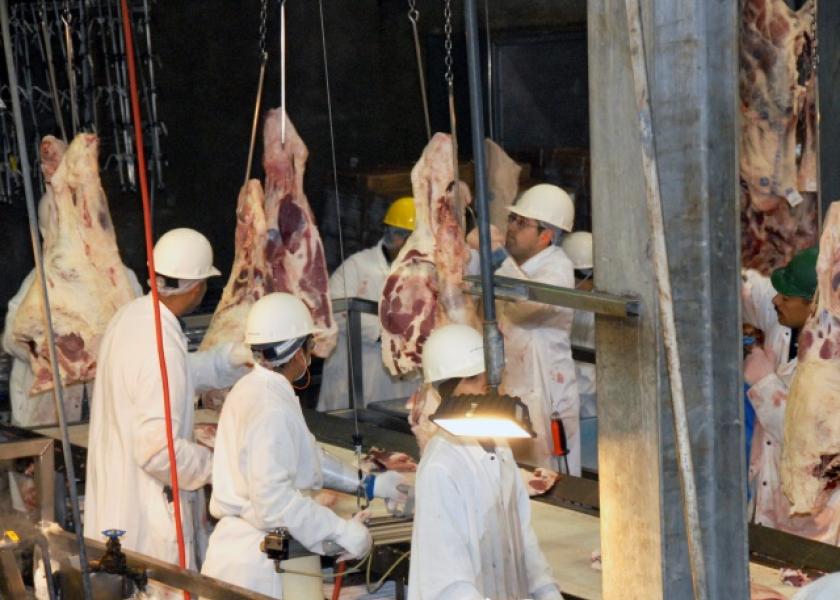Beef Packing: The Math of Why It's Different Now

By: Cassie Fish, Risk Manager and Livestock Market Analyst
Note: Reprinted with permission from Cassandra Fish and Consolidated Beef Producers
Between 2005 and 2014, the U.S. beef packing industry took just under 90,000 head of weekly kill capacity out of the market by closing plants. Forced to do so as the U.S. cattle herd dropped to modern historical lows, big financial losses resulted in shuttered plants and laid off workers. It’s hard to believe that it was just 28 months ago the last plant closed.
Packing plants are designed to run 48 hours per week, if the economics support it. The last time plants ran that hard consistently was 2003, when the U.S. blew through fed cattle at a record speed, filling the void left when Canada’s beef industry was crippled by BSE.
The current fed cattle slaughter capacity at 48 hours per week is about 552,000 to 562,000 head, way more than enough to handle current fed supplies. But the years of being forced to run reduced hours of 32 and 36-hour work weeks resulted in the loss of skilled labor at most if not all plants.
Today’s labor limitations in U.S. packing plants has limited the fed kill to around 500,000 head per week so far this year. There were zero weeks in 2015 of a 500k per week fed kill, it occurred twice in 2014 and 15 weeks in 2013.
Packer margins are running black between $100 and $200 per head and this year will go down as a record. This would be the first time in history when such economics did not incentivize running maximum hours. But the plants are not staffed to run 48 hours. The industry is currently averaging between 42 and 43 hours per week. Furthermore, labor isn’t always as skilled as they used to be nor line speeds as fast.
Packing companies are making an effort to add staff and improve plant efficiency. But it is a complicated and challenging process, even more so nowadays, and it takes time to both hire and train people.
Cattle feeders are routinely and understandably frustrated by having little if any leverage in negotiations with packers. But with long-term cattle supplies on the rise in this current market environment, feedyards being anything less than current has a greater negative impact on the market than any other time in history. There is no other way to restore a semblance of bargaining position to the feeder than by the feeding industry regaining full currentness in all cattle feeding regions.
The process of adding packing plant staff just as the process of retailers lowering beef prices is happening, but the positive effect of these actions is not being felt today and the cattle feeder continues to absorb the full brunt of the imbalance. Only dramatically lower cattle replacement costs are left as a way to push the imbalance of money flow further down the line.
Today’s Action
Cattle are trading lower today, $103-104 in Texas and Kansas, a new cash low for the year, and lower lows may still be in store. Talk is the kill could reach 610k this week, inflated by big cow kills. Pressure on the already weak lean complex will increase.
After years of live cattle futures carrying huge discounts to cash and locking limit down at the drop of a hat, it appears that cash and futures are trading places, with cash now under attack, while futures find trading par to slightly premium more to their liking.
Disclaimer: The Beef, Consolidated Beef Producers nor Cassie Fish shall not be liable for decisions or actions taken based on the data/information/opinions.







